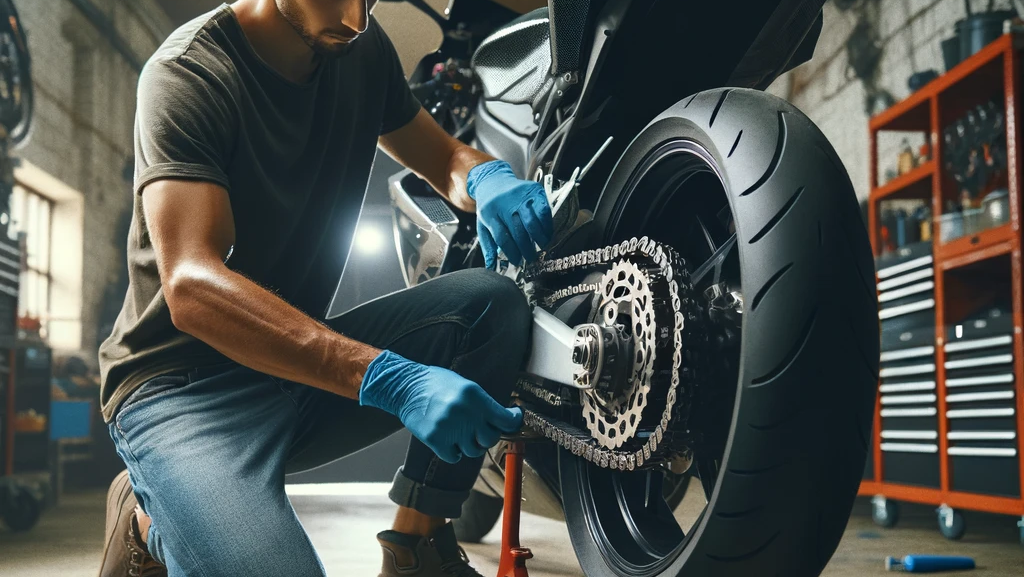Have you ever been out for a ride and heard a strange noise coming from your motorbike? It can be quite unnerving, but fear not! Your bike is likely trying to communicate an issue that needs attention. By identifying these noises, you can troubleshoot problems before they escalate. This guide will walk you through common motorbike sounds, what they mean, and how to fix them.
Common Motorbike Noises and Their Causes
- Rattling or Clanking
- Possible Cause: Loose or worn-out parts
- Description: If you hear a rattling or clanking sound, especially at lower speeds or when idling, it’s often due to loose bolts or components. This noise can come from various places, such as the exhaust system, fairings, or the chain.
- Solution: Inspect your bike for loose parts. Tighten any bolts that may have come undone and check for worn-out components that might need replacing. Pay special attention to the exhaust system and the chain tension.
- Squealing or Screeching
- Possible Cause: Brake issues or worn-out belts
- Description: A high-pitched squealing noise, especially when braking, is usually an indicator of worn brake pads. Screeching can also come from worn-out belts or slipping drive belts.
- Solution: Check your brake pads and replace them if they’re worn out. Inspect belts for signs of wear and tear, and replace them if necessary. Ensure the drive belt is properly tensioned.
- Whining
- Possible Cause: Transmission problems or bearing issues
- Description: A whining noise that varies with engine speed can point to transmission issues or problems with the bearings. This sound often signifies a need for lubrication or part replacement.
- Solution: Inspect the transmission fluid levels and top up if necessary. Check the bearings for wear and lubricate or replace them as needed. If the problem persists, it might require a professional inspection.
- Popping or Backfiring
- Possible Cause: Fuel mixture problems or exhaust leaks
- Description: Popping or backfiring, especially when decelerating, can indicate a lean fuel mixture or an exhaust leak. It’s a sign that the engine is not burning fuel efficiently.
- Solution: Check the air-fuel mixture and adjust if necessary. Inspect the exhaust system for leaks and repair any found. Ensure the carburetor is clean and functioning properly.
- Grinding
- Possible Cause: Clutch or gear issues
- Description: A grinding noise, particularly when shifting gears, usually points to clutch problems or issues within the gearbox. It can indicate worn clutch plates or problems with the gear teeth.
- Solution: Check the clutch cable adjustment and inspect the clutch plates for wear. If you find significant wear, replace the clutch plates. For gearbox issues, it’s best to consult a professional mechanic.
Diagnosing Issues by Sound
Rattling or Clanking Diagnosis
- Inspection Steps:
- Check all external bolts and fasteners.
- Inspect the exhaust system for any loose parts.
- Examine the chain for proper tension and lubrication.
Squealing or Screeching Diagnosis
- Inspection Steps:
- Examine brake pads for wear.
- Inspect the drive belts for fraying or slipping.
- Ensure proper belt tension and alignment.
Whining Diagnosis
- Inspection Steps:
- Check transmission fluid levels.
- Inspect and lubricate bearings.
- Examine the transmission for wear and tear.
Popping or Backfiring Diagnosis
- Inspection Steps:
- Adjust the air-fuel mixture.
- Inspect the exhaust system for leaks.
- Clean and adjust the carburetor.
Grinding Diagnosis
- Inspection Steps:
- Adjust the clutch cable.
- Inspect clutch plates for wear.
- Consult a mechanic for gearbox inspection.
Preventive Maintenance Tips
- Regular Inspections: Conduct regular inspections of your motorbike to catch any issues early. Look for loose parts, worn-out components, and any signs of damage.
- Proper Lubrication: Ensure all moving parts are properly lubricated to prevent wear and tear.
- Timely Replacements: Replace worn-out parts promptly to avoid further damage.
- Consistent Cleaning: Keep your motorbike clean to prevent dirt and debris from causing damage.
- Scheduled Maintenance: Follow the manufacturer’s maintenance schedule for routine checks and servicing.

